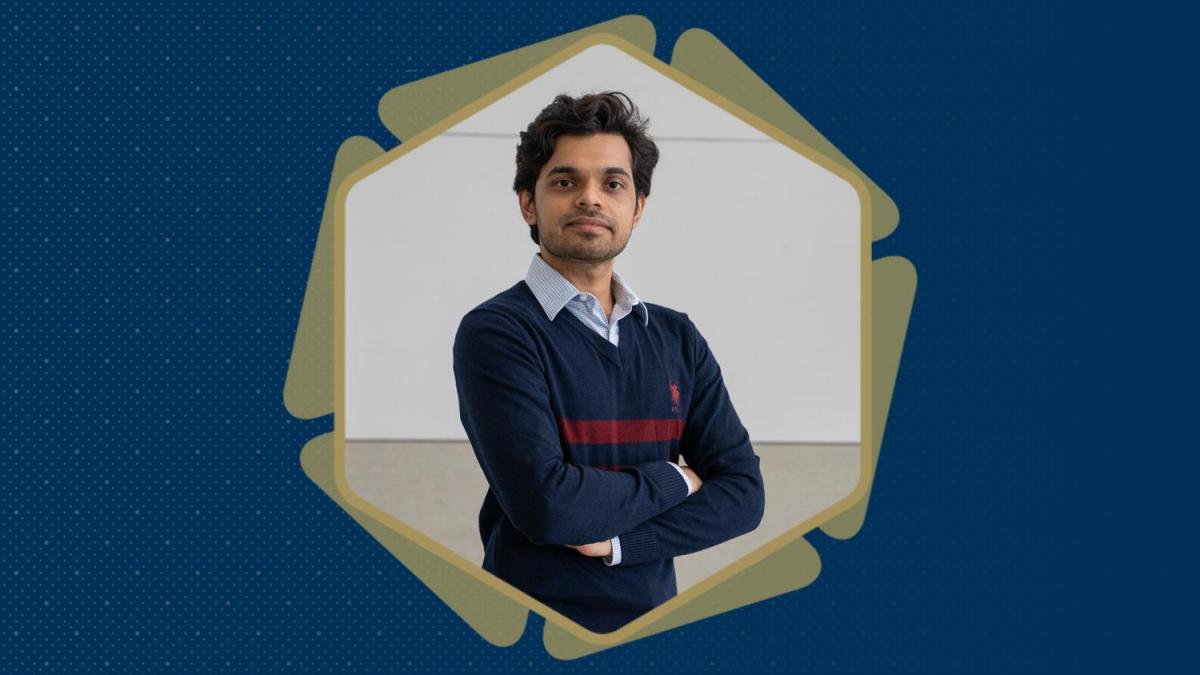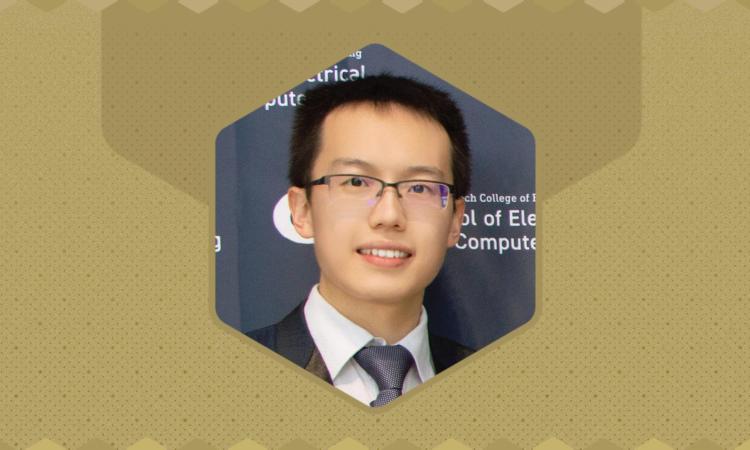The recent ECE Ph.D. graduate was awarded the Best Student Paper Award at the 2025 IEEE Custom Integrated Circuits Conference, where he presented a novel integrated circuit architecture designed to overcome the shortcomings of current neuromodulation technology.
(text and background only visible when logged in)

Nearly one in three people worldwide is affected by a neurological disorder, according to the World Health Organization. That makes it the leading cause of illness.
Among the researchers working to address this global health challenge is recent Georgia Tech School of Electrical and Computer Engineering (ECE) Ph.D. graduate Arindam Mandal, whose innovations in neural interface technology are helping to overcome key engineering challenges in therapeutic brain systems.
The researcher, who is currently a mixed-signal design engineer at Nvidia, was recently honored with the Best Student Paper Award at the 2025 IEEE Custom Integrated Circuits Conference (CICC). His work is closely tied to advances in neuromodulation, a technique that uses implanted devices or other methods to alter or reset the activity of the nervous system, and has shown promise as a treatment option.
In particular, closed-loop neuromodulation, which stimulates brain tissue in real-time as a direct response to detected neural activity, has been of interest to researchers.
Developing these systems, however, has run into some significant engineering challenges.
Recording brain activity with the necessary detail and accuracy over large areas requires neural sensing electronics that are both ultra-compact and energy efficient. On top of that, the task becomes even more difficult when the reciprocal brain tissue stimulation is applied simultaneously.
“The process can produce large artifact signals, which misrepresent or distort a recorded signal, potentially obscuring the information being collected,” Mandal said, who performed the research in Associate Professor Visvesh Sathe’s Processing Systems Lab. "This can overwhelm the whole system if not handled effectively.”
At CCIC, he presented a highly scalable neural recording integrated circuit (IC) architecture that recovers from artifact signal distortion in just 8.8 microseconds – the fastest recovery time reported to date. It accomplishes this while maintaining a high signal-to-noise ratio of 85.4 decibels.
The architecture features an analog front-end designed to work well with advanced complementary metal-oxide-semiconductor (CMOS) processes, which are optimized for digital logic by employing digital-friendly analog signal processing techniques. The chip also includes a self-calibration feature that improves the accuracy of the recorded data.
According to Mandal, the technology could have a lasting impact on patients suffering from Parkinson’s disease, epilepsy, and essential tremors, among other disorders, potentially paving the way for more responsive and effective treatments.
“This advance marks a significant step toward next-generation, large-scale closed-loop neuromodulation systems, bringing real-time, high-precision therapeutic brain interfaces closer to reality,” he said.
(text and background only visible when logged in)
Related Content
Wan Wins First Place at Premier Computing Ph.D. Forum
The Ph.D. candidate was recognized for research that aims to advance performance, efficiency, and trustworthiness of physical intelligence.
Mahajan Receives Inaugural Google ML and Systems Junior Faculty Award
The award supports early-career researchers whose work advances efficient, scalable, secure, and trustworthy computing systems.

